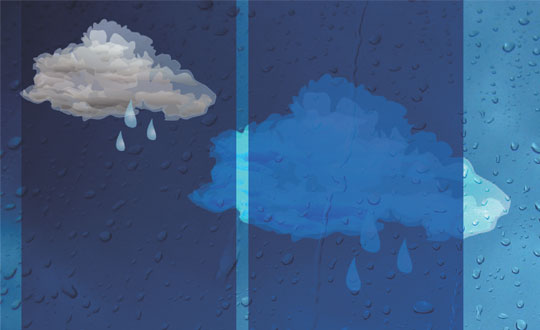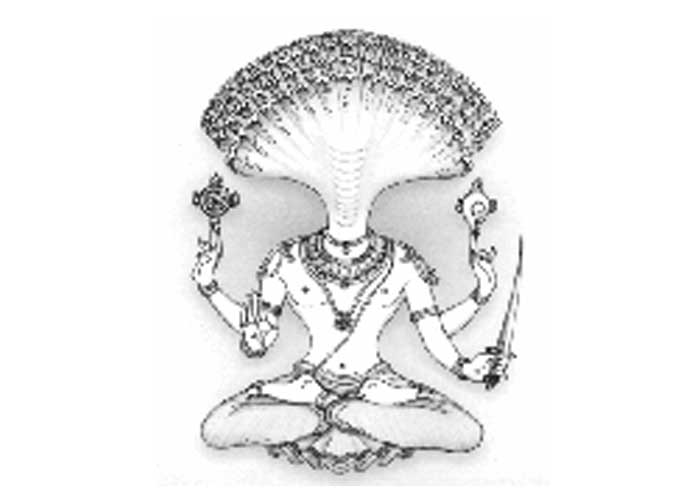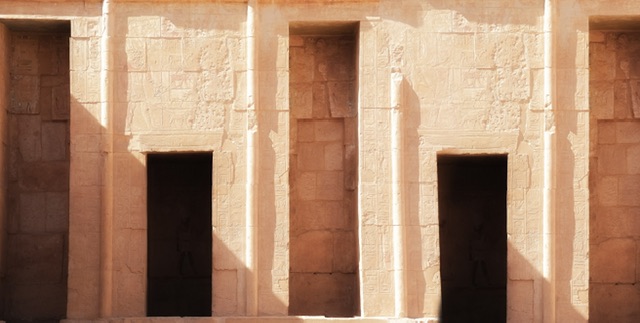Sir John Woodroffe once said, “those who say their ancestors were apes, theirs must have been…mine were not.” I concur.
Our ancestors, the ancient Indians, were scientists of the highest order; eons ago they conceptualised and documented things which modern science is still struggling to find answers to. Take, for example, the science of hydrology.
The ancient vedic literature contains numerous references to hydrology, concepts of hydrological processes and measurements. Important concepts of modern hydrology are scattered in various verses of Vedas, Puranas, Meghmala, Mahabharat, Mayurchitraka, Vrhat Sanhita and other ancient vedic texts. As early as 550 AD, Varahamihira presented a simple method for obtaining potable water from a contaminated source of water which involved the use of various plant materials along with solar heating, aeration, quenching of water with fire heated stones, gold, silver, iron or sand. The change in the quality of water with the months of year and suitability of water from different sources for various uses was discussed.
HYDROLOGICAL CYCLE
The hydrological cycle is the chain of events describing the history of water as it circulates in the air, water bodies, soils and rocks and plants and animals. Vedic texts contain valuable references on hydrologic cycle, which form the basis of modern hydrology.
Rig veda 1.6.4 states that the water which gets divided in minute particles due to the heat of sun is carried by wind and after the conversion into cloud it rains again and again. The verses 1.19.7, 1.23.7 and 1.32.7 explain the transfer of water from earth to the atmosphere by the wind, breaking up of water into small particles and evaporation due to sun rays and subsequent rain and that water is never stationery, but it continuously gets evaporated and cones down and due to its small size we cannot see the water particles going up, respectively.
Mahabharata explains that the water ascends to sky with the help of agni (fire) and air and then its humidity gets condensed and subsequent rainfall (XII, 188,15,15) and that the plants drink water through their roots (184,15-17). The mechanism of water uptake by plants is explained by the example of water rising through a pipe. It is said that the water uptake process is facilitated by the conjunction of air.
Dandhaymanayshu charachayshu godhoombhoot astvabha nishkramantee
Ya ya oordhva mastraynayrita vai tastastva bhamyagnivayucha.
Ato dhoomagnivatanam sanyogstavamuchyatay
Vareeni varshteetyabhrambhrasyeshah sahas tradrik.
Linga Purana scientifically explains evaporation, condensation, rainfall with suitable examples and says after being heated by sun, water contained in most of the materials on earth gets converted to smoke (vapour) and ascends to sky with the air and subsequently gets converted to cloud. Thus the combination of smoke, fire and air is the cause of cloud formation. These clouds cause rainfall under the guidance of Lord Indra, having thousand eyes.
Aadityapateetam suryaganeha somam sankramatay jalam
Nadeebhirvayuyuktabhirlokadhanam pravartatay
Yatsomatstravatay surya tadbhayshvavatishthatay
Megha vayunighatain visrajant jalam bhuvi
Evamutikshapyatay chaiva patatay cham punarjalam
Na nashmu udkasyasti tadev parivartatay
Vayu Purana also contains valuable references on hydrologic cycle. Vayu (51. 14-15-16) states that the water evaporated by sun ascends to atmosphere through the capillarity of air, and there gets cooled and condensed. After formation of clouds it rains by the force of air. Thus, water is not lost in all these processes but gets converted from one form to other continuously.
SURFACE WATER
Efficient water use, lining of canals, construction of dams, tanks, essential requirements for the construction of good tanks, bank protection methods, spillways and other minor aspects were given due consideration in ancient times in India. Well organized water pricing system was prevalent during the time of Kautilya. Various references are available in the Vedas emphasizing the importance of efficient water use so as to reduce the intensity of water scarcity and drought etc.
Atharva veda says that if the water source is on mountains, then the river formed will be perennial and will flow with high speed (AV.I., 15.3) and that the rivers originating from snow clad mountains will keep on flowing in summers also (AV.11, 3.1).
In the Gopathabramana the nomenclature for a meandering river is vipaat (11,8), It was also acquainted with two types of springs or falls, namely hot and cold.
GROUND WATER
The times when according to western scientists, men lived in caves, the vedic masters possessed the complete know-how of ground water occurrence, distribution and utilisation. The relevance of sun rays, wind, humidity, vegetation, etc. as causative agents for evapotrans piration was well realized. People also developed the technique of knowing the slope of an area by means of a flowing river. Hydrologic indicators such as physiographic features, termite mounds, bolls, flora, fauna, rocks and minerals were used to detect the presence of ground water, variation in the height of water table and hot and cold springs.
Ground water utilization by means of wells, well construction methods and equipment are described at length in the 54th chapter of Vrhat Sanhita named as Dakargala. Slokas 1 and 2 of Dakargala state the importance of science of ground water exploration which helps man to ascertain the existence of water,
Dharmyam yashashyam va vadabhaytoham dakargalam yen jaloplabdhiha
Punsam yathagdeshu shirastathaiva chhitavapi pronnatnimnasanstha.
Ekayna vardayna rasayna chambhyashchyutam namasto vasudha vishayshanta
Nana rastvam bahuvarnatam cha gatam pareekshyam chhititulyamayva.
The veins of water beneath the earth are like veins in the human body, some higher and some lower, the water falling from sky assumes various colours and tastes from differences in the nature of the earth.
The Vishnu Purana says regarding availability of ground water: “If there is a termite mound nearby to the east of a Jambu tree, plenty of sweet water, yielding for a long time occurs at a depth of two Purushas, at a distance of three hastas (cubit) to the south of the tree (Vr.S.54.9). Similarly, an Arjuna tree with a termite mound to the north shows water at a depth of 3.5 Purushas at a distance of 3 hastas to the west.”
HYDRO-METEOROLOGY
Effects of yagya, forests, reservoirs, etc. on rainfall; classification of clouds, their colour, rainfall capacity, forecasting of rainfall on the basis of natural phenomena, such as colour of sky, clouds, wind direction, lightening, and the activities of animals; all these were well developed in India even before the 10th century BC. The knowledge of monsoon winds and height of clouds along with the division of atmosphere was well developed in the vedic age. “O cloud-bearing winds, your troops are rich in water, they are strengtheners of life, and are your strong bonds, they shed water and augment food, and are harnessed with waves that wander far and spread everywhere. Combined with lightning, the triple-group (of wind, cloud and lightning) roars aloud, and the water falls upon the earth.”
Contrivance to measure rainfall was developed during the time of Kautilya (4th century BC) which had the same principle as that of modern hydrology except that the weight measure of Drona was adopted instead of modern depth measurement of rainfall. This rain gauge was known as Varshaman. Kautilya describes its construction in these words, “In front of the store house, a bowel (Kunda) with its mouth as wide as an aratni (nearly 18 inches) shall be set up as rain gauge,” (Arthasastra, Book II, Chapter V). Kautilya furnishes a very accurate scientific description of the distribution of rainfall with statistics. The quantity of rain that falls in the country of Jangala (desert countries) is 16 dronas (4 adak = 1 drona and one adak equals nearly 7 lb, 11 oz), half as much in moist countries (the countries which are fit for agriculture), 13.5 dronas in the countries of Asmakas (Maharashtra); 23 dronas in Avanti, and an immense quantity in the western countries, the border of the Himalayas and the countries where water channels are used in agriculture. (Arth, Chapter XXIV, Book II, P. 130).
Further discussing the geographical details of rainfall, he observes, “when one third of the requisite quantity of rain falls both during the commencement and closing months of the rainy season, and two third in the middle, then the rainfall is considered very even.” Discussing the classification of clouds and interrelationship of rainfall and agriculture, the celebrated author adds, “there are the clouds which continuously rain for seven days; eighty are they that pour minute drops; and sixty are they that appear with the sunshine.” When rain, free from wind and unmingled with sunshine falls so as to render three turns of ploughing possible, then the reaping of good harvest is certain.
In the Varahamihira’s Vrhat Sanhita (550 AD) three chapters are devoted to hydrometeorology comprising Pregnancy of clouds (Chapter 21), Pregnancy of air (Chapter 22) and quantity of rainfall (Chapter 23). Jain texts – Prajnapana and Avasyaka Curnis provide outstanding studies of the various types of winds. The Prajnapana makes reference of snowfall and hailstorm. The Trilokasara of Nemichandra says that there are seven types of periodic clouds. They rain for seven days each in the rainy season. Then there are twelve species of white clouds. They also bring rain for seven days each. Thus the season of rainfall extends over 133 days in all.
References:
Hydrology and Water Resources Information System for India
http://www.nih.ernet.in/rbis/vedic.htm#water_purification
Hydrology in Ancient India – A book by the National Institute of Hydrology (1990)
http://www.indiawaterportal.org/sites/indiawaterportal.org/files/Hydrology%20in%20Ancient%20India_NIH_1990.pdf





